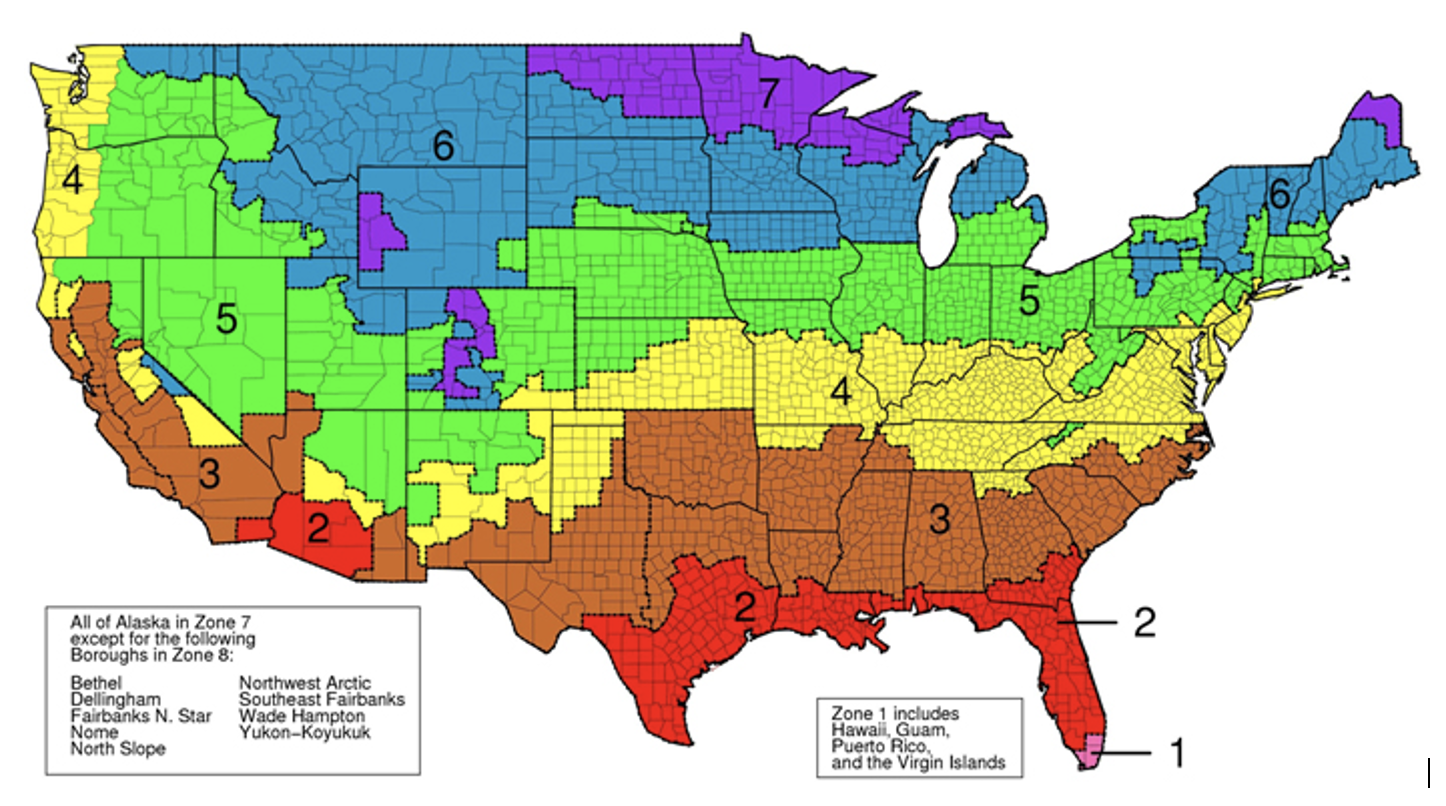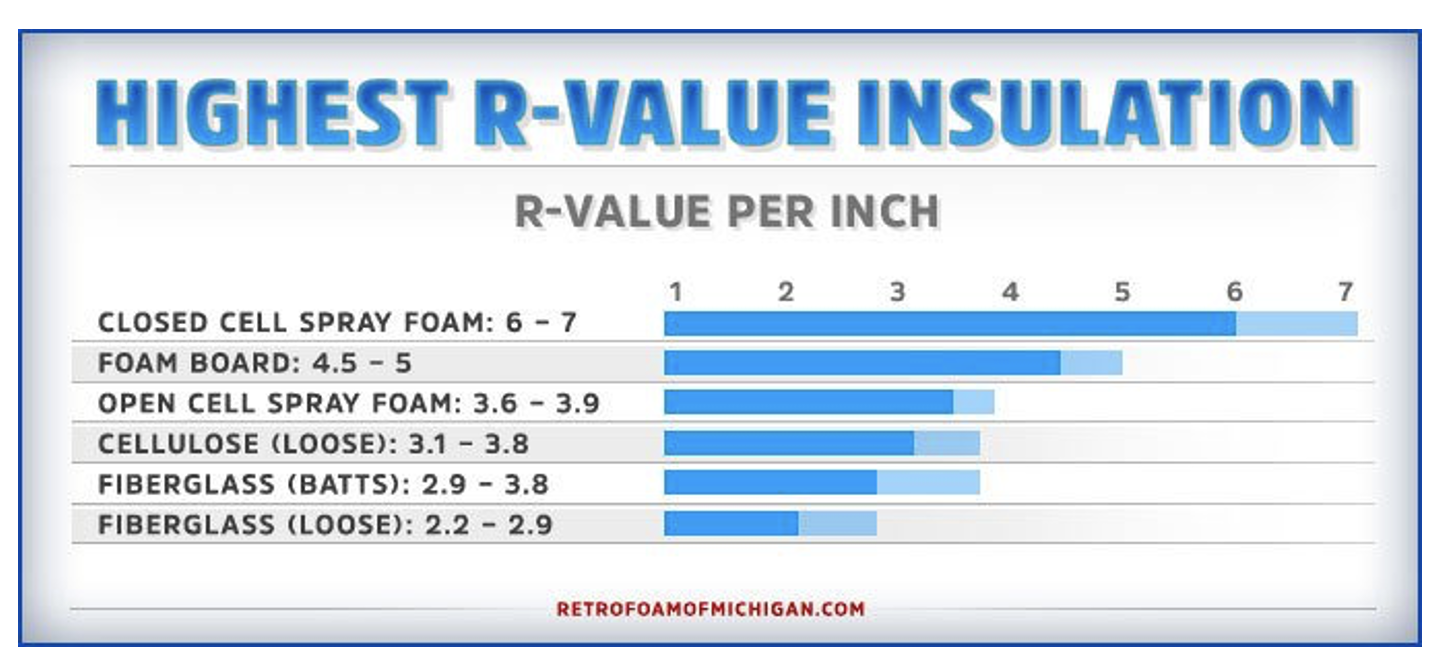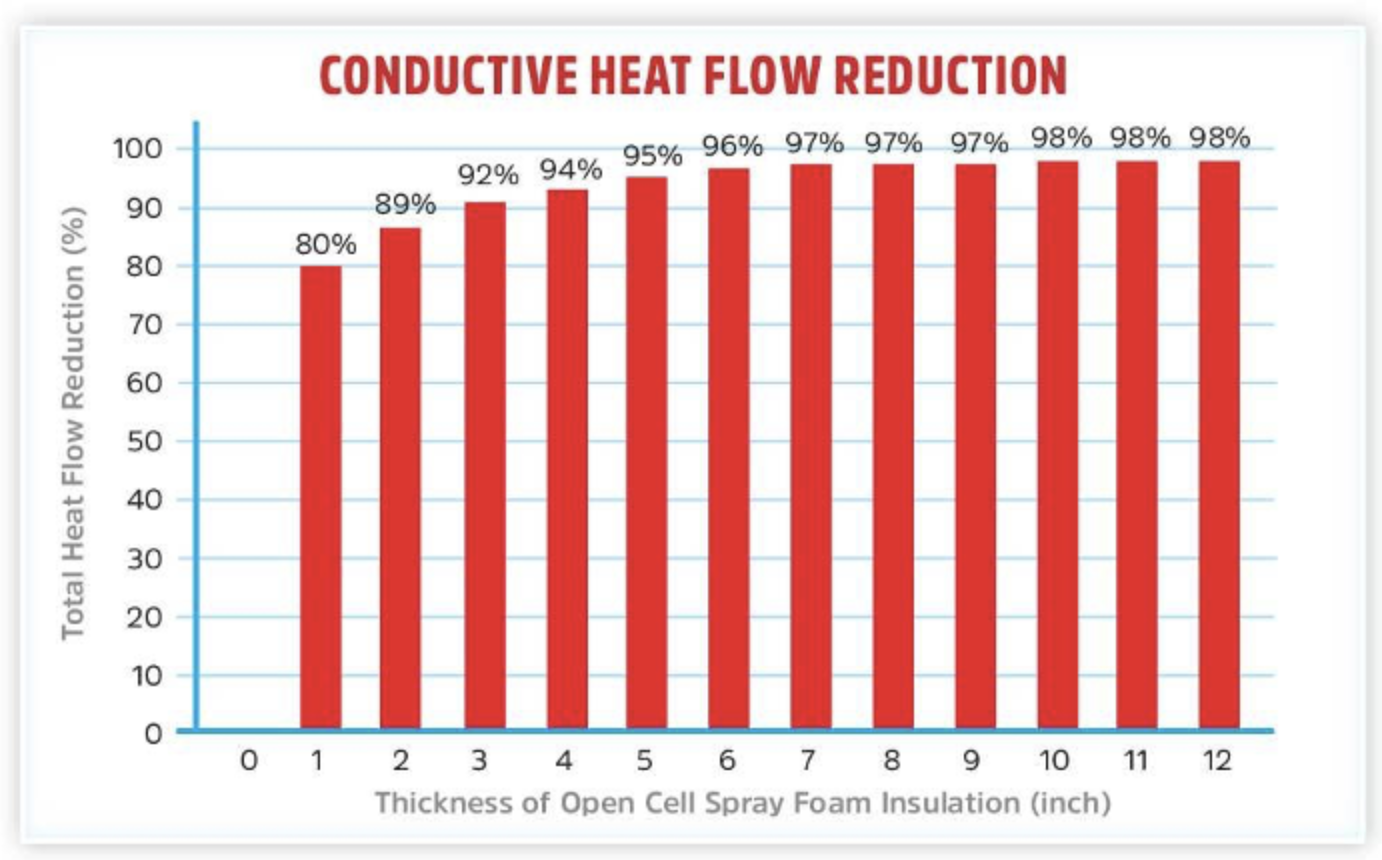Building Science Corporation GM-2103: Commercial Spray Foam Guide – Joseph Lstiburek
Spray foam insulation has significant advantages over other insulation systems due to the spray foam ability to provide continuity of the water control, air control, vapor control and thermal control layers necessary for environmental separation. Using spray foam results in low exterior air leakage that provides significant energy efficiency and significant sound attenuation. Using spray foam results in excellent vapor control and thermal efficiency.
Spray polyurethane foam (SPF) – high density closed cell – is the only product that can perform all of the functions of the principal control layers of the “Perfect Wall” namely:
- The water control layer – Keep water out or let it drain if it gets in,
- The air control layer – Air flow in and out of structure suitable in moderate climates or temperatures ranges in the 60’s to 80’s and low humidity. However, not many areas of that range exist.
- The vapor control layer – Ability of material to resist or to expel moisture (humidity) in air. Very cold or very warm climates allow easier vapor flow barrier placement. Mixed climates means vapor flow goes outside-in or inside-out, so barriers are not effective unless specialized equipment is used or vapor transfer is eliminated.
- The thermal control layer – Isolation of interior conditioned air from external temperatures (Air Seal).
Basically, the interior of the structure becomes conditioned space which is separated from the outside elements and has a strong tendency to maintain that condition with little energy expenditure. The quality of insulating materials to prevent heat transfer is primarily determined by its R-value (resistance to heat transfer) and energy efficiency (ratio of retainage of conditioned air within a confined area; air seal). Closed-cell Spray Polyurethane Foam (SPF) has the highest R-values and energy efficiency of currently available materials. The required insulation for various areas in structures and geographical areas is shown in the following graphic:


In other words, the colder the climate, the more insulating and energy efficient material is required. See comparisons below.
Insulation R-Value Chart

As you can see above, each of the materials represented has different R-Values.
Here’s a little closer look at that range for each material per inch. Keep in mind, there is a range because different brands may have a different R-Value. The same is true for different manufacturers and products.
- Closed Cell Spray Foam: R-6 to R-7
- Foam Board: R-4.5 to R-5
- Open Cell Spray Foam: R-3.6 to R-3.9
- Cellulose (Loose-Fill): R-3.1 to R-3.8
- Fiberglass (Batts): R-2.9 to R3.8
- Fiberglass (Loose-Fill): R-2.2 to R-2.9
The following is a graphic of the thermal efficiency of open-cell spf per inch of coverage. Closed-cell foam is a denser foam and one inch of closed-cell would produce equivalent energy ratings of 1.7 inches of open-cell foam or approximately 3 inches of closed-cell foam to get energy efficient ratings in excess of 95%. In addition, closed-cell foam is highly water and flood resistant whereas open-cell foam is not and would lose its insulating values if wet.

Closed-cell foams also provide greatly enhanced structural stability to the building allowing it to withstand high winds and intense storms, in hot or cold environments and increased weight loads of snow and ice in cold climates.
Closed-cell foams do require specialized equipment and professional installation for proper application and performance. It is definitely not a D.I.Y. job. Thus, it one of the most expensive of the various roofing and wall systems.
However, several studies done at Texas A&M University and a school district in Southern Texas indicate that the energy savings alone paid for the higher cost of the roofing system and all the other benefits such as the following were essentially included:
- Storm damage resistant.
- Minimal maintenance.
- Easy repair since damage, if any is localized.
- Stronger more sustainable buildings.
- Year round comfort of interior.
- Roof contouring to eliminate drainage issues and water ponding.
- Easily renewed with cleaning and additional coatings to overcome weathering damage to roof.
- 5-20 year renewable warranties available.
Our GreenSeal 2.5 to 3.5 products are the best solution to provide your roof the underlying protection needed from severe cold and snow accumulation.
Read more about our GreenSeal products.

